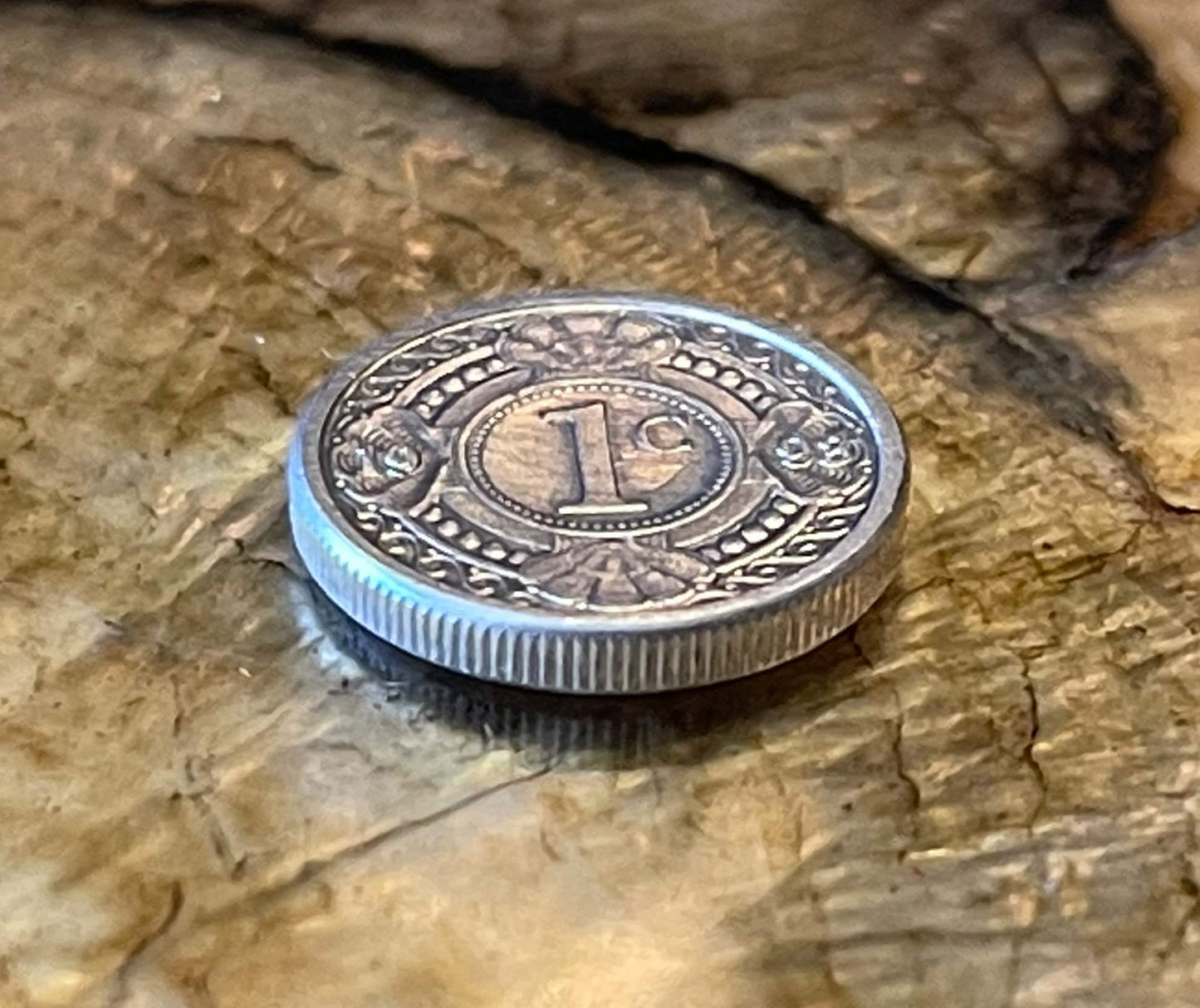elemintalshop
Curaçao Orange 1 Cents Netherlands Antilles Authentic Coin Money for Jewelry and Craft Making (Curaçao Liqueur) (Triple Sec( (Witbier)
Curaçao Orange 1 Cents Netherlands Antilles Authentic Coin Money for Jewelry and Craft Making (Curaçao Liqueur) (Triple Sec( (Witbier)
Couldn't load pickup availability
Curaçao Orange 1 Cents Netherlands Antilles Authentic Coin Money for Jewelry and Craft Making (Curaçao Liqueur) (Triple Sec( (Witbier)
Obverse: Plant bearing fruit (Orange blossom) inside inner circle, lettering around outside of circle. Privy marks at bottom
Lettering: NEDERLANDSE ANTILLEN
Reverse: Value inside central beaded circle. Each corner contains a shell, left and right corners contain divided date
Lettering: 1 c
Features
Issuer Netherlands Antilles
Ruling authority Beatrix (1980-2013)
Willem-Alexander (2013-date)
Type Standard circulation coin
Years 1989-2016
Value 1 Cent
0.01 ANG = 0.0056 USD
Currency Gulden (1828-date)
Composition Aluminium
Weight 0.7 g
Diameter 14 mm
Thickness 1.95 mm
Shape Round
Orientation Coin alignment ↑↓
Number N# 1041
References KM# 32, Schön# 72
Wikipedia:
Laraha (Citrus × aurantium subsp. currassuviencis), or Curaçao orange (Citrus aurantium var. currassuviencis), is the name of a citrus tree that grows on the island of Curaçao, and also the fruit of this tree. A descendant of the bitter orange, the fruit of the laraha is too bitter and too fibrous to be considered edible.
History and use
Seville orange trees transplanted on Curaçao from Spain in 1527 did not thrive in the arid climate and soil of this Southern Caribbean island. As the trees were then abandoned, the fruit evolved from a bright orange color into the green laraha. The dried peels of the laraha, however, were discovered to be pleasantly aromatic, and experimentation with the extracts of these peels led to the creation of Curaçao liqueur.
********
The Oxford Companion to Beer definition:
Curaçao oranges
Curaçao Oranges are a citrus fruit grown on Curaçao, a small island nation comprising part of the Kingdom of the Netherlands, and situated in the Lesser Antilles off the northern coast of Venezuela. Spaniards settled the island in 1527 and soon set to planting orange groves. There is argument as to whether the variety planted was Sevilla or Valencia, but what is known is that the oranges didn’t grow well in volcanic soil and arid climate of Curaçao. The fruits were small, bitter, and inedible. The colonists kept on trying, and adapting to the local conditions the plant took on new characteristics, the species designation citrus aurantium currassiviencis, and a new name, the laraha.
While the laraha fruit itself has little value, the peel retains many fine aromatics and is used to produce traditional versions of Curaçao liqueur and triple sec. The Dutch took control of Curaçao in 1815 and, like other spices, the bitter orange peel found its way into Dutch and Belgian beer. It can be used to flavor many types of beers, but it is best known as a traditional ingredient of the wheat-based Belgian witbier. See white beer. The peel, which is green before drying but turns gray and almost moldy looking upon desiccation, is usually added at the kettle. Brewers have various methods for using it, but most involve steeping the peel in wort for several minutes before the end of boil, taking care not to over-boil it and drive off the desired aromatic oils. After steeping, the peel should be removed from the wort. The aromatics given by bitter orange peel are notably different than those given by the simpler, brighter sweet orange peel. In concentration, bitter orange peel aroma can veer from citrusy to an almost meaty pungency, reminiscent of hot dogs. Therefore, while a valuable flavor in the brewer’s arsenal, it is a spice best used sparingly.
Share






Very nice coin came quickly, just as described and very well packed!
Great quality, very cool coin. Would 100% recommend buying from this shop.
5 stars review from Cynthia
5 stars review from Dianna
great coin and price fast service thank you stay safe be well and happy .






